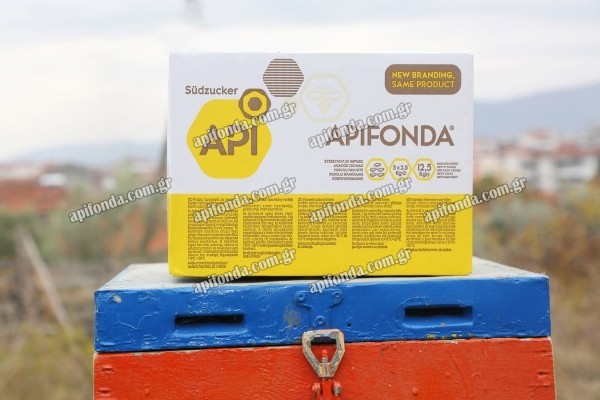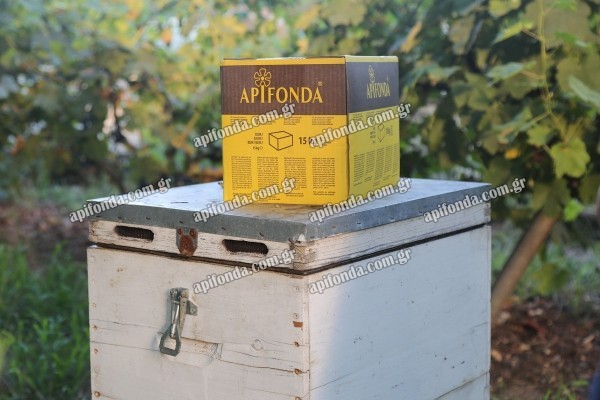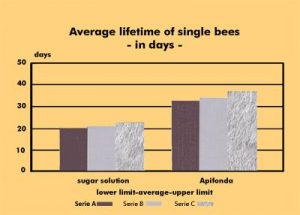Apifonda
APIFONDA: The product which during the 30 year abidance in Greece has been evaluated and distinguished for his excellence.
Apifonda causes bees’ stimulation, helps with the winter supplies and in any case there is lack of honey in the hive.
Using Apifonda you can substitute equal quantity of the honey for winter sustenance.
Composition of Apifonda
It contains refined sugar (without residues of other substances), fructose, glucose, maltose and smaller quantities of other sugars and only 8% water.
Apifonda is consisted of 2/3 microcrystal refined sugar and 1/3 dissolved sugar. This mixture apart from the sugars, it also contains Invertase enzyme in small quantities and which it also exists in organism of the bees.
This enzyme causes the sugar breakdown regardless of the temperature and as a result the pasta of Apifonda remains soft and can be taken easily by the bees.
Because of its microcrystalline structure (1/10 of the size of crystals of powered sugar, and because of the fact that the crystals are surrounded by a thin layer of syrup, the intake gets straight in bees’ mouths without the necessity for the crystals to be melted previously.
This composition of Apifonda is ideal, has been chosen for the nutritional needs of the bees and doesn’ t contain deciduous.
When we feed the bees with Apifonda
The results of the winter sustenance of bees with Apifonda are obvious in growth population of the swarm and greater efficiency in honey the next year.
The special composition of Apifonda hinders the crystallization of the winter supplies the bees keep in their cells.
Especially in Greece, because of its climatic conditions, Apifonda can be used even much better through all year long. It is fully assimilated and doesn t create feces. Therefore dysentery is avoided.
b. Spring
Because of the easy intake of the metabolism of Apifonda it the bees’ organism it increases dramatically the fertility and the degree of incubation of the bees and therefore the increase of the bees’ population and as a final result the best exploitation of the blossom period.
c. Every period with lack of blossom
The ease of the determination for the necessary quantity of Apifonda for bees’ nutrition during periods of reduced blossom or when there is a complete lack of it, minimizes the risk of degradation of the quality of the honey because of any possible deposits of sugar
Effect on bees’ lifetime
It is validated that Apifonda lengthens the life time of the bees as it is shown in the following diagram.
(see the relevant research of the Apifonda effect on bees lifetime by Dr. MAUZ. ERLANGEN Germany 1981)






